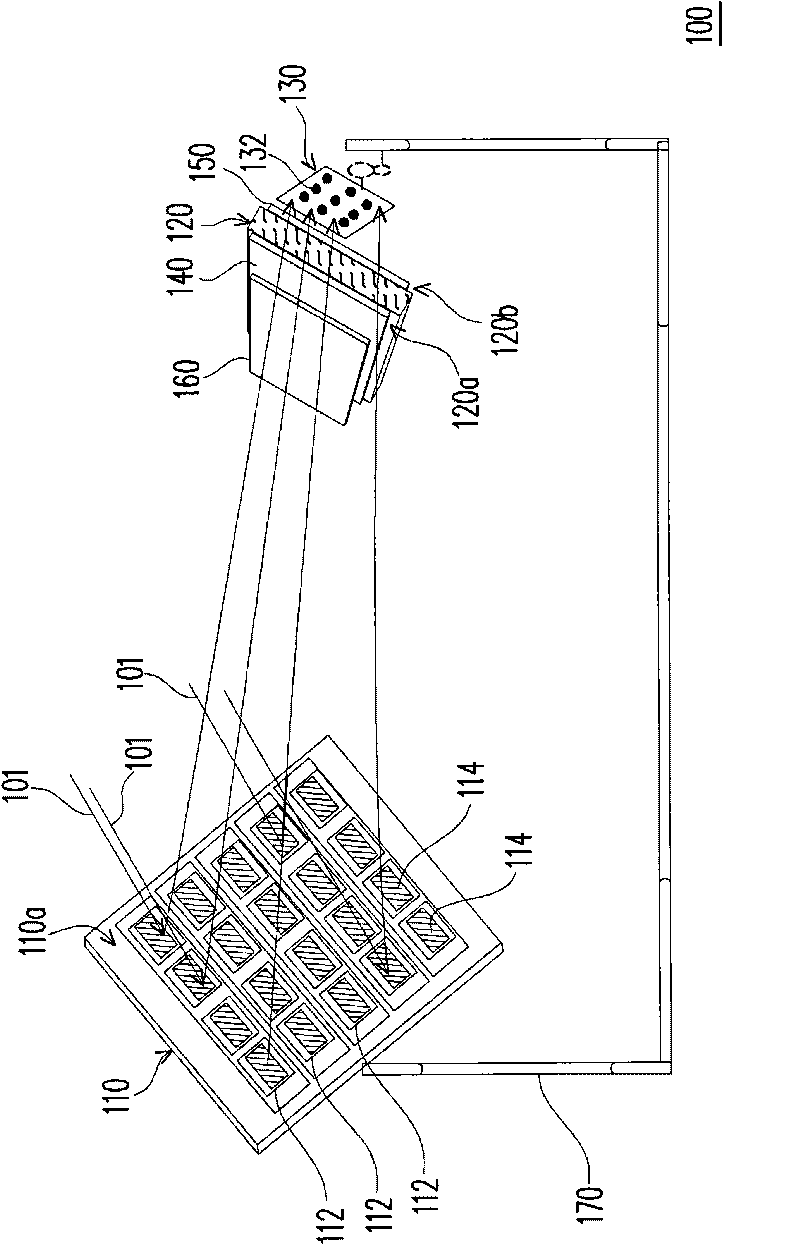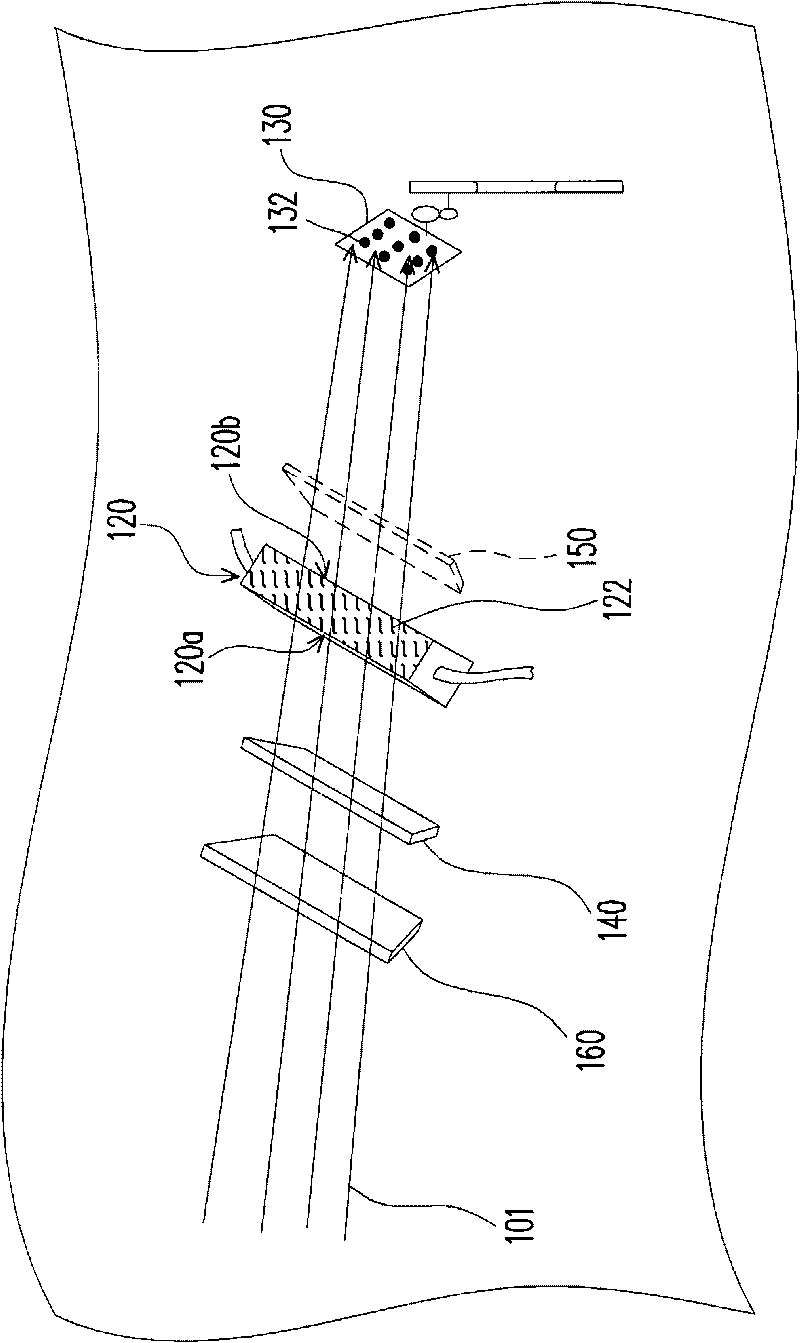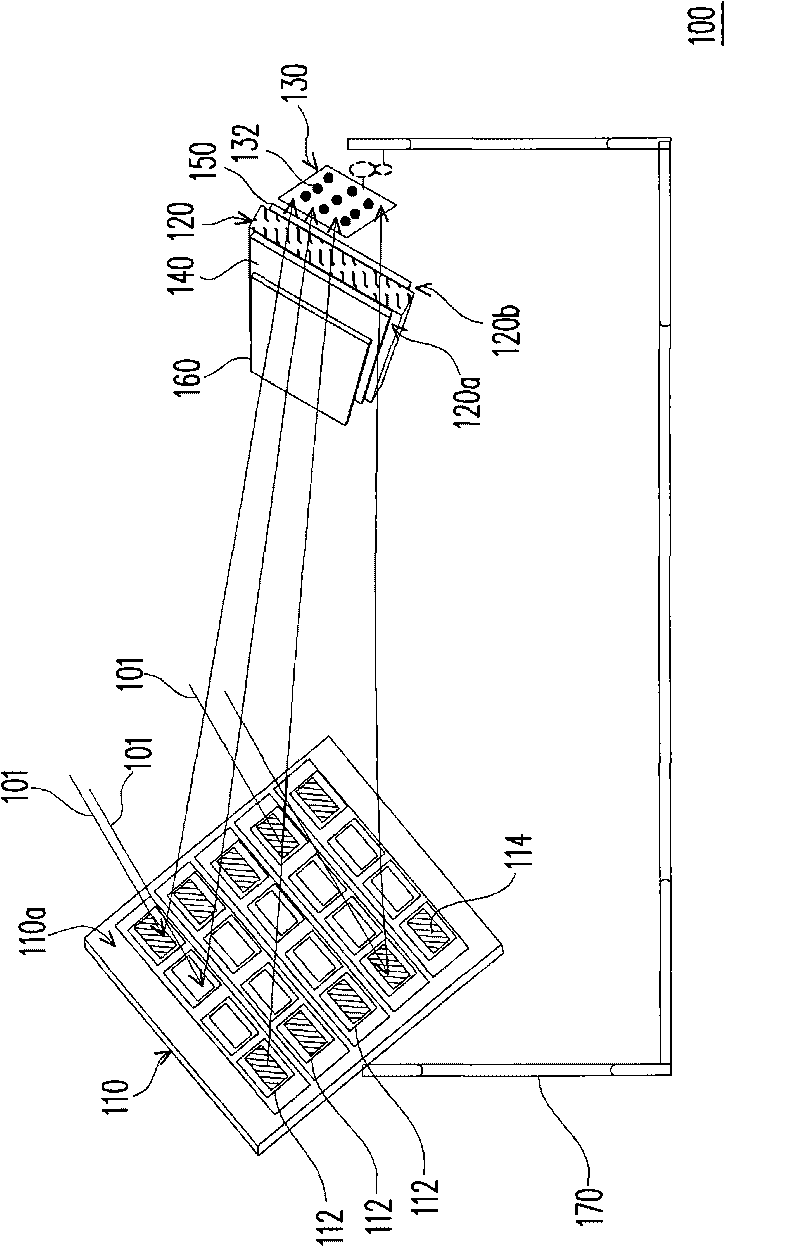Solar system
A solar energy and solar cell technology, applied in the field of solar energy systems, can solve problems such as increasing costs
- Summary
- Abstract
- Description
- Claims
- Application Information
AI Technical Summary
Problems solved by technology
Method used
Image
Examples
Embodiment Construction
[0042] Figure 1A It is a schematic diagram of a solar energy system according to an embodiment of the present invention, Figure 1B for Figure 1A A partial enlarged view of the depicted solar system. Please also refer to Figure 1A and Figure 1B , the solar system 100 of this embodiment includes a reflection unit 110 , a heat absorber 120 and a first solar panel 130 . The reflection unit 110 has a first energy gap E g1 The solar cell 114 and a reflective surface 110a, and the reflective unit 110 is suitable for reflecting or converging the sunlight 101, and according to the first energy gap E of the solar cell 114 g1 Suitable for converting sunlight 101 having a wavelength shorter than or equal to x nanometers into electrical energy. In addition, the thermal energy absorber 120 is adapted to convert the sunlight 101 reflected by the reflecting unit 110 with a wavelength longer than or equal to y nanometers into thermal energy, where y>x. Sunlight 101 is adapted to penet...
PUM
 Login to View More
Login to View More Abstract
Description
Claims
Application Information
 Login to View More
Login to View More - R&D
- Intellectual Property
- Life Sciences
- Materials
- Tech Scout
- Unparalleled Data Quality
- Higher Quality Content
- 60% Fewer Hallucinations
Browse by: Latest US Patents, China's latest patents, Technical Efficacy Thesaurus, Application Domain, Technology Topic, Popular Technical Reports.
© 2025 PatSnap. All rights reserved.Legal|Privacy policy|Modern Slavery Act Transparency Statement|Sitemap|About US| Contact US: help@patsnap.com



